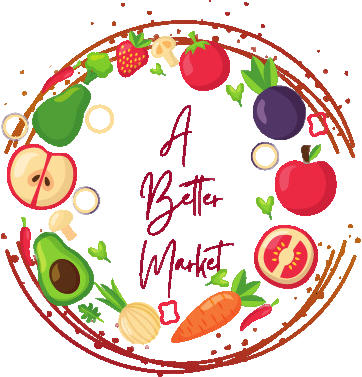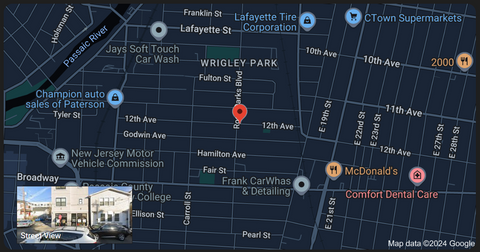In an age when awareness of nutrition and health is on the rise, the fact that a fresh salad is often more expensive than a fast-food burger can seem baffling. For many families, the high price of healthy foods, like fruits, vegetables, and lean proteins, is a barrier to nutritious eating. But why is it that fast food remains so cheap and accessible while salads, fresh produce, and other healthy options are out of reach for many?
In this post, we’ll explore the economic and systemic factors that make healthy foods more expensive and discuss how businesses like A Better Market are stepping up to bridge the gap. By focusing on local partnerships, educational programs, and affordable fresh produce, A Better Market is making nutritious food accessible and empowering communities to live healthier lives without breaking the bank.
The Root Causes: Why is Healthy Food More Expensive?
The higher cost of healthy food compared to fast food has deep-rooted causes, involving everything from farm policies to supply chain logistics. Here are some of the core issues driving the cost of a salad above that of a burger:
- Agricultural Subsidies Favor Unhealthy Ingredients
In the United States, federal subsidies largely benefit crops like corn, soy, and wheat, which are the primary ingredients in many processed foods. These ingredients are also cheap to grow and can be stored for long periods. Corn, for example, is the basis for high-fructose corn syrup and other additives that are commonly found in fast food and processed snacks. By subsidizing these crops, the government indirectly keeps the price of processed foods low.
Meanwhile, fruits and vegetables receive a much smaller percentage of federal subsidies. Known as “specialty crops,” produce like lettuce, tomatoes, and broccoli do not receive the same financial support as corn or soy. This lack of subsidies makes growing, harvesting, and distributing fresh produce more costly, ultimately resulting in higher prices for consumers.
- Cost of Labor for Fresh Produce
Fresh fruits and vegetables are labor-intensive, requiring planting, tending, and harvesting by hand in most cases. Compared to the mass production of processed ingredients, which is highly automated, the human labor needed for fresh produce adds significant costs to fruits and vegetables.
Additionally, labor costs don’t end with the farm. Fresh produce requires careful handling, sorting, and packing to ensure quality and reduce spoilage during transport. For every hand that touches these items, a small cost is added, and by the time produce reaches grocery store shelves, the price reflects these additional expenses.
- Higher Transportation Costs for Perishable Items
Transporting fresh produce is costly, especially because it’s perishable and needs to be kept cool. Fast food ingredients, like processed beef patties or buns, are often made from shelf-stable ingredients that are easier to transport. These ingredients can be stored and transported at room temperature, making logistics cheaper and simpler.
Produce, on the other hand, must be refrigerated from farm to store, which means additional fuel costs, refrigeration equipment, and specialized trucks. Fresh produce also has a shorter shelf life, leading to higher waste costs when unsold items spoil, which retailers account for by charging more for these products.
- Lack of Access to Healthy Foods in Food Deserts
In low-income communities, grocery stores with fresh produce are often scarce, creating what is known as a “food desert.” Fast-food outlets are more prevalent in these areas because they operate with low-cost ingredients and can adapt to limited spaces. As a result, healthy foods are not only more expensive but also less available, forcing families in food deserts to rely on cheaper, processed, or fast-food options.
Food deserts perpetuate the cycle of unhealthy eating patterns in communities, as access to affordable fruits, vegetables, and whole foods is either limited or nonexistent. In these areas, even when fresh produce is available, it often carries a higher price due to the costs associated with transporting it into underserved neighborhoods.
- Marketing and Demand Challenges for Healthy Food
Fast food is heavily marketed to consumers, with advertisements highlighting affordability, taste, and convenience. The fast-food industry has multi-million-dollar marketing budgets that make burgers and fries seem like the most accessible option for a quick meal. Conversely, healthy foods don’t receive the same level of promotion. Marketing budgets for fresh produce and organic foods are significantly smaller, which means fewer incentives and less awareness of healthier choices.
Because fast food is marketed as quick and affordable, demand remains high, driving down costs due to high volume sales. In contrast, lower demand for fresh fruits and vegetables keeps their prices higher, as farmers must sell at prices that cover the costs of lower-volume production.
How A Better Market is Making Healthy Eating Affordable and Accessible
Understanding these systemic issues, A Better Market was created to fill the gap by making fresh, healthy food affordable for the community. As Paterson’s first Healthy Corner Store, A Better Market has developed partnerships and strategies to combat the barriers to healthy eating, making nutritious options available at reasonable prices.
- Sourcing from Local Farms
One of A Better Market’s key strategies to keep prices affordable is by sourcing fresh produce directly from local farms. Instead of relying on long-distance transportation, A Better Market works with farms in South Jersey, ensuring that fresh fruits and vegetables are accessible with fewer added transportation costs. Buying locally also supports nearby farmers, creating a sustainable cycle that benefits both the store and the local agricultural community.
By shortening the supply chain, A Better Market reduces costs associated with refrigeration, packaging, and transportation, passing those savings directly on to customers. Additionally, produce purchased from local farms tends to be fresher, reducing spoilage and offering better nutritional value.
- Providing Seasonal Produce
A Better Market prioritizes seasonal produce, which is not only fresher but also less expensive. Seasonal produce is easier to source, as it doesn’t require expensive transportation or greenhouse farming. By offering seasonal fruits and vegetables, A Better Market can lower costs and provide customers with the highest-quality produce at affordable prices.
This approach also encourages the community to explore new foods, as they’re introduced to a rotating variety of fruits and vegetables each season. Customers can find affordable healthy options year-round, creating excitement and awareness around nutritious eating.
- Educational Programs and Community Workshops
A Better Market goes beyond providing affordable produce by offering educational programs that teach families about nutrition, cooking, and budgeting for healthier meals. These workshops help demystify healthy eating, providing practical tips for using ingredients in creative, delicious ways without needing expensive items.
Nutrition education empowers families to make informed choices that can transform their health and their finances. Whether it’s teaching families how to prepare vegetables that are new to them or offering recipes that use simple ingredients, A Better Market provides the community with the tools they need to succeed.
- Discounted Healthy Meal Kits
To make healthy eating even easier and more convenient, A Better Market has started offering meal kits with all the ingredients needed to prepare balanced meals. These kits are tailored for affordability, using staple items that provide nutritional value without high costs. Unlike typical meal kit services that can be expensive, A Better Market’s meal kits are designed to fit within a family’s budget.
By including fresh produce, whole grains, and lean proteins, these kits encourage families to skip fast food and cook wholesome meals at home. Meal kits also reduce food waste, as each ingredient is portioned according to the recipe, helping families save money and eat better.
- Special Pricing for Community Programs and Bulk Buying Options
A Better Market collaborates with local organizations to provide affordable healthy foods to those in need, including programs for seniors and families with young children. Special discounts and packages are offered through these programs, which help make fresh produce affordable for those on tight budgets. Bulk buying options for staples like rice, beans, and pasta also help families save, making it easier to buy in quantity for less.
These initiatives build a network of support around healthy eating in the community. By partnering with community programs, A Better Market can reach a wider audience, ensuring that fresh produce isn’t a luxury but an accessible necessity for everyone.
How Choosing A Better Market Benefits the Community
Every dollar spent at A Better Market supports the health and wellness of the Paterson community. Beyond offering affordable fresh produce, A Better Market helps promote long-term change by addressing food insecurity and fostering a healthier environment. Some of the broader impacts of A Better Market’s mission include:
- Reducing Chronic Health Issues: By making fresh produce affordable, A Better Market helps prevent diet-related health problems like obesity, diabetes, and heart disease. Affordable access to fruits and vegetables can transform individual and community health.
- Empowering Families and Children: A Better Market’s educational programs teach families about nutrition from an early age, instilling lifelong healthy habits. Children who learn about nutrition and have access to fresh food grow up with a better understanding of wellness.
- Supporting the Local Economy: By partnering with local farms, A Better Market boosts the local economy, supporting the livelihoods of farmers and reducing reliance on long supply chains. This focus on local agriculture keeps money circulating within the community.
- Sustainability and Environmental Impact: Local sourcing reduces the carbon footprint associated with transporting produce over long distances. By focusing on sustainability, A Better Market helps contribute to a healthier planet.
Conclusion: Healthy Eating is Possible with A Better Market
While fast food remains affordable and accessible, businesses like A Better Market are proof that healthy eating doesn’t have to be out of reach. By focusing on local sourcing, education, community programs, and seasonal produce, A Better Market makes it possible for families to enjoy nutritious, fresh foods without paying high prices.
With innovative solutions and a commitment to community wellness, A Better Market is helping shift the narrative. For families looking to make healthier choices, A Better Market is here to provide affordable, nutritious options, proving that eating well doesn’t have to cost more—it just requires the right approach and community support.




